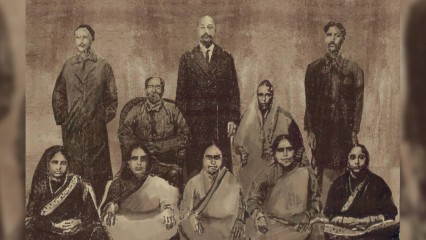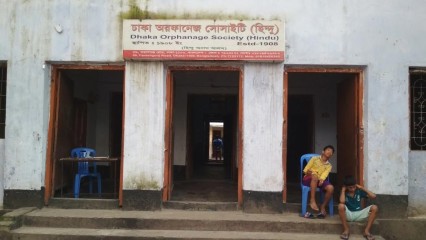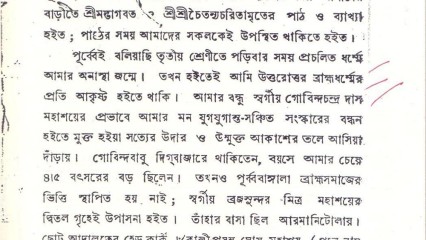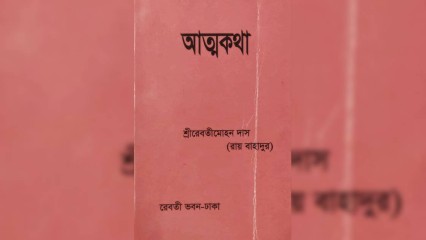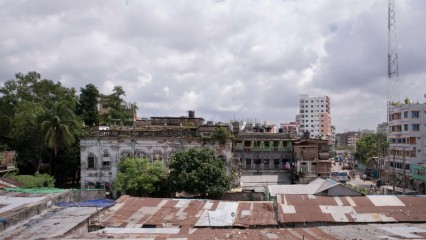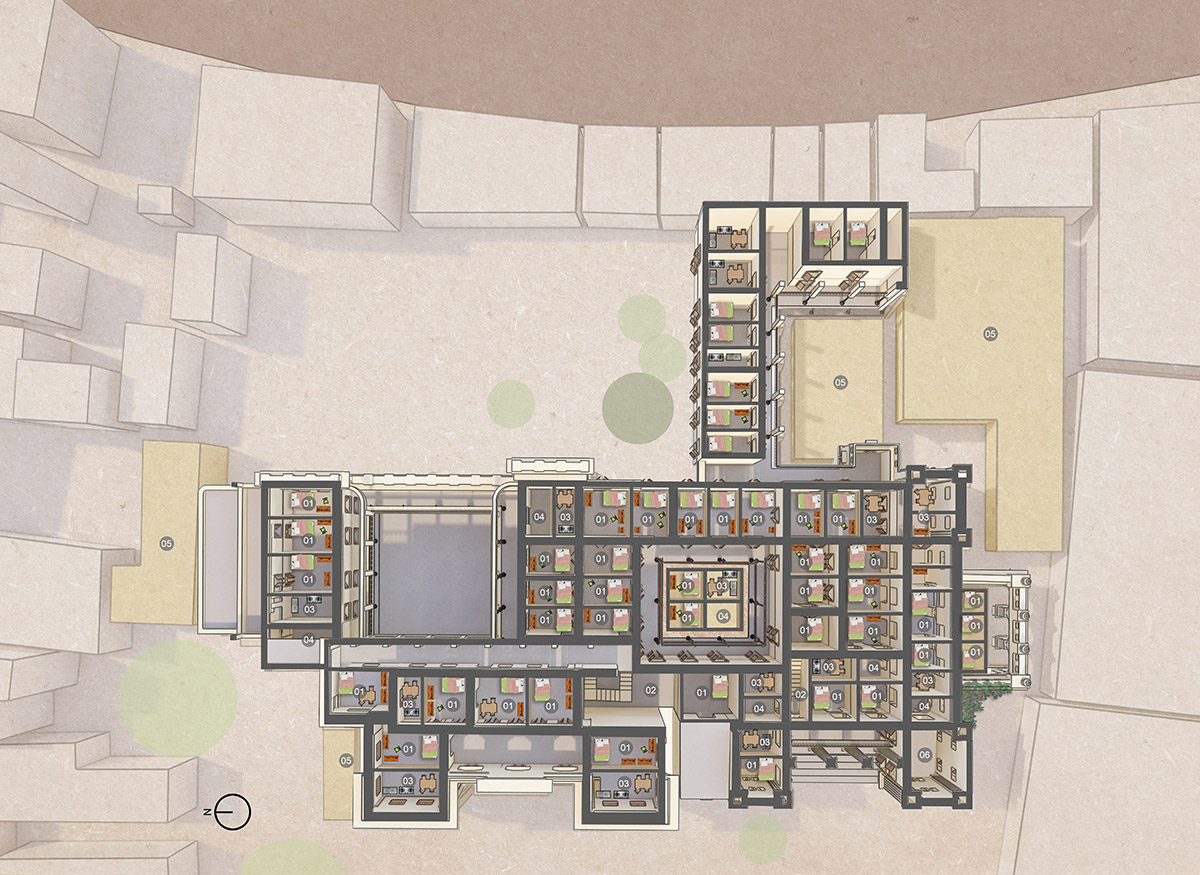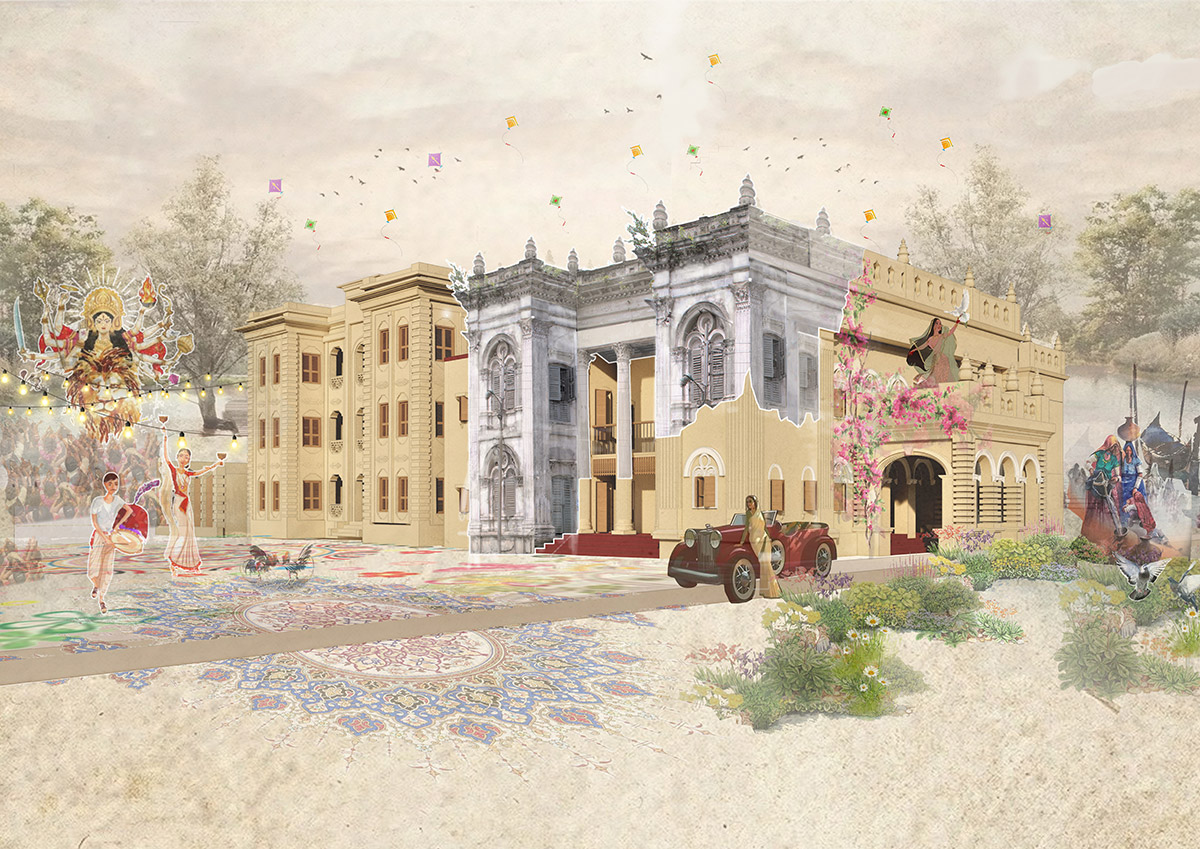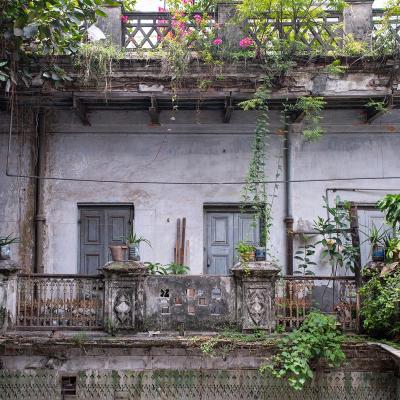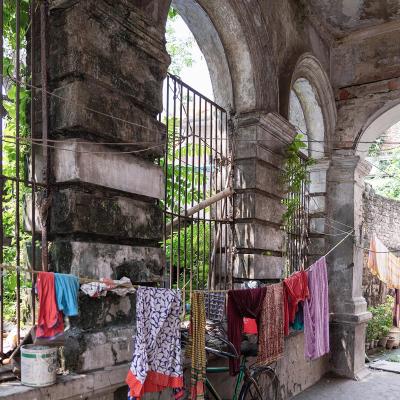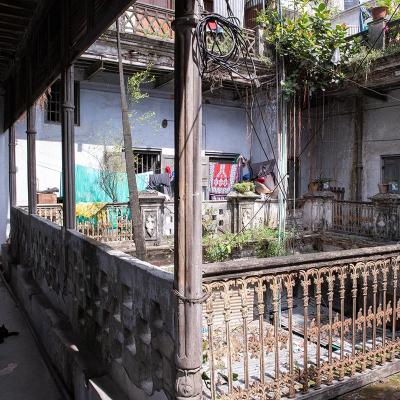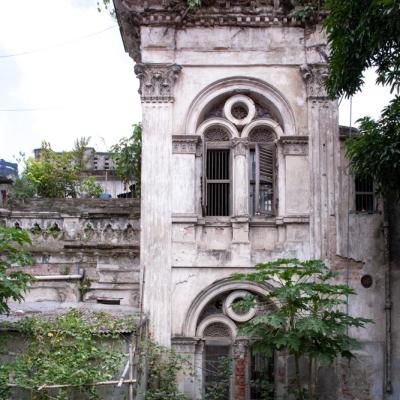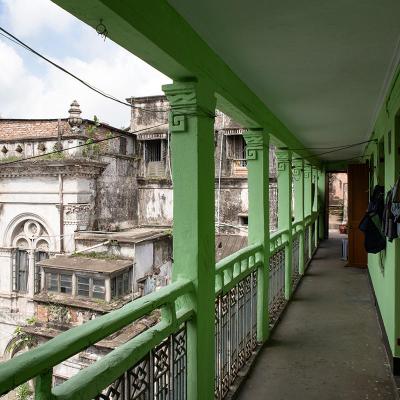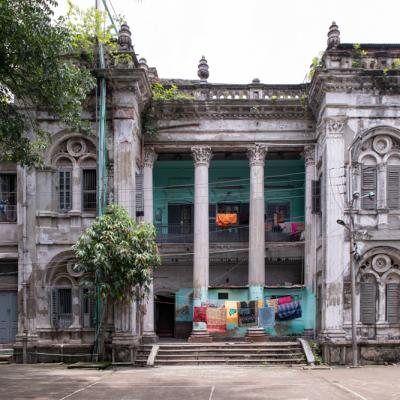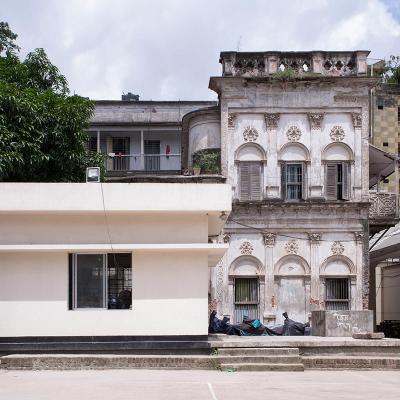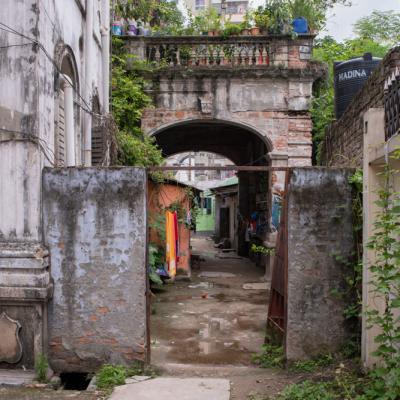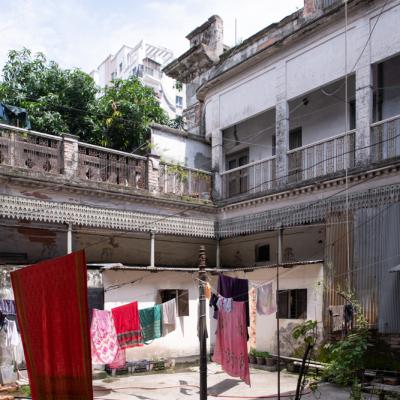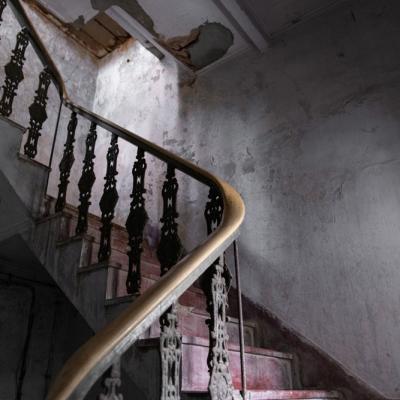Early 20th Century
Sutrapur
Revati Mohan Das House
An elaborate mansion on the banks of the former Dholai Khal in Sutrapur area, the Revati Mohan Das Lodge represents a special type of house built by the wealthy citizens of early 20th century Dhaka. With the first house built in 1900 in a neo-Classical architectural style by the rich businessman Revati Mohan Das, and extended with a second house in 1942 by the son Hemendra Kumar Das, the Revati Mohan Das Lodge is now a noteworthy heritage building. The owners of the house played an illustrious role in the political and economic life of the city. The elder Revati Mohan Das was a successful businessman who dealt in investment and various enterprises and contributed to numerous philanthropic projects in the city. Revati Mohan’s son Satyendra Kumar Das was the chairman of Dhaka Municipality for two terms, and younger son Hemendra Kumar Das was the mayor of Mymensingh Municipality for a number of years.
Share with others
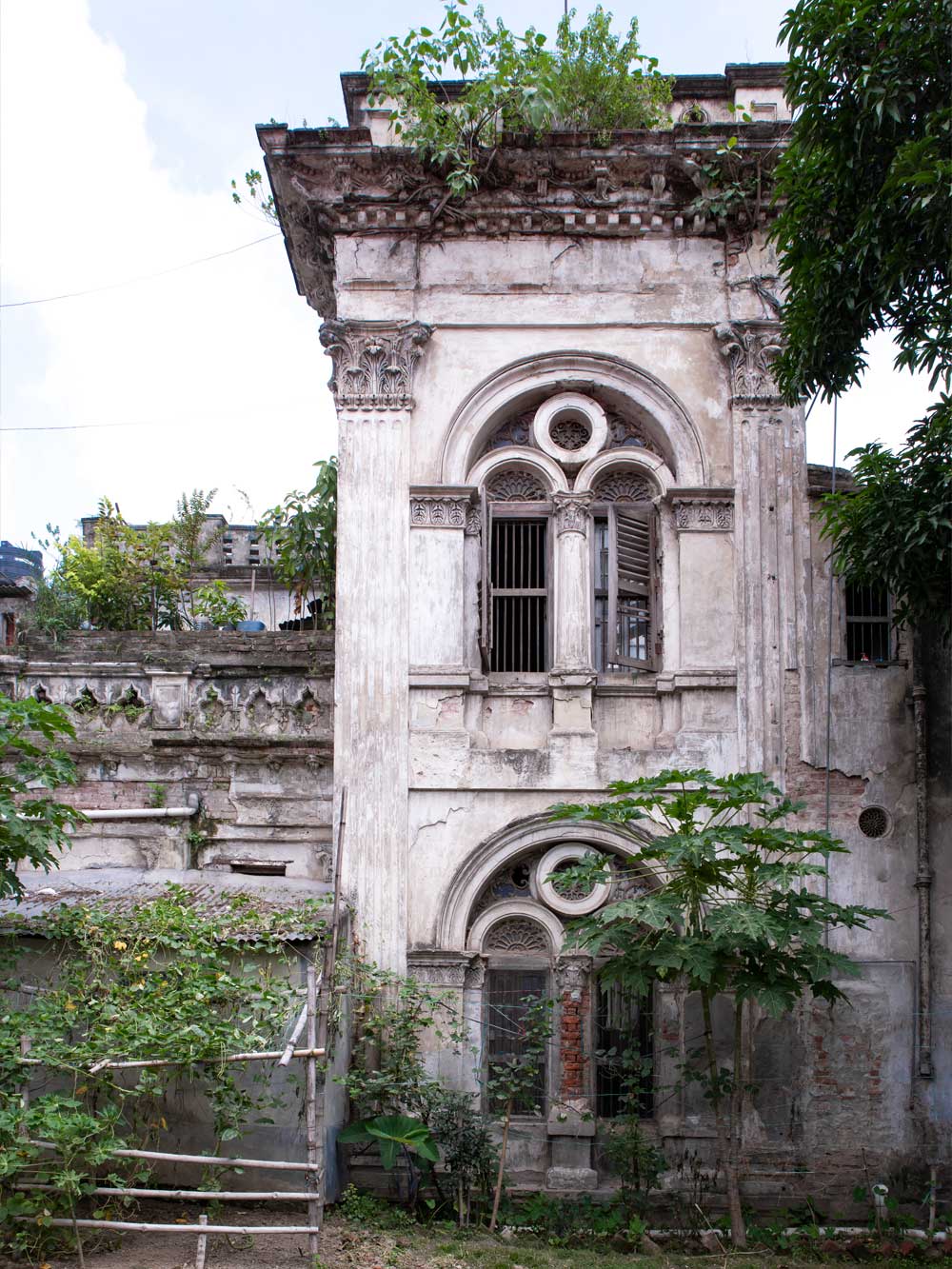
About Revati Mohan Das House
The Revati Bhaban, located in Sutrapur, was constructed on a land of one acre by Revati Mohan Das, a successful Hindu businessman in the early 20th century. The building contains about thirty-five rooms of various dimensions, with courtyards and porches. The century-old house itself is quite grand. It consists of splendid pillars that rise from the ground floor to the rooftop, where the parapet is topped with decorative finials. An elegant veranda runs behind the rows of pillars. The windows of the first house present Palladian arches and other details from the neo-Classical repertory.
After the passing of Revati Mohan Das, his elder son, Satyendra Kumar Das, held on to the ancestral Revati Bhaban; while his younger son, Hemendra Kumar Das, constructed a new house on the north side. This new of the house was named Das Lodge and contains about the same number of rooms, and was built in a hybrid style. The house complex stands as a significant testament to various political, religious and cultural events of Dhaka of that time.. Currently occupied by the fire service department with family members lodging in the house, the present building contains many changes and mutilations.
The Revati Bhaban represented houses of Bengali elites and zamindar families of that time with a socio-political impact on Dhaka society rather than a mere dwelling. One of the ways the English-educated Bengali elite of 20th century Dhaka tried to emulate Europeans was to celebrate their major festivals like New Year’s Day. To commemorate such occasions, ball dances were held in the spacious hall rooms of their mansions, and these customs were very appealing for the neo-elite in helping them establish themselves as successors of the European colonizers. Considering these new customs, large open spaces, entrance lobbies, and lofty halls were introduced in their houses. Such preferences of spaces are evident in the portico in the south and the large hall room upon entrance in Revati Bhaban.
Exploring the house
A heritage building need not be a monument or landmark building; it can be representative of an epoch or period in the history of the city in many ways. Through this project, we have captured various perspectives in the form of virtual tours, timelines, stories, photographs, architectural features and locations.
Use the buttons belows to navigate through this page.
Virtual tour
The virtual tour is a simulation of an existing location, composed of a sequence of still images. It gives a 360 view of the location and one can easily enjoy an immersive experience of the spaces sitting from anywhere in the world. In this case, this tour is enriched with all the relevant information, it also consists of old photo gallery, audio and video clips and various stories of the house.
The following icons has been used in the virtual tour to easily navigate and view details information, large images, photo gallery and videos. Click and hold and move the mouse or tap on the tour and drag in any direction to rotate the default view. You can also zoom in and zoom out the tour.
 |
Virtual tour control panel |
| Move to Previous node | |
| Move to Previous node | |
| Play/ pause Auto rotate | |
| Show/ hide information | |
| Show/ hide tour thumbs | |
| Play/ pause Audio | |
| Show large image | |
| Show image gallery | |
| Play video | |
| Next-Previous button on the tour |
The Revati Mohan Das House built in 1900
The original house was built by Revati Mohan Das himself, and was known as Revati Bhaban.
Timeline
Situated on the bank of the former Dholai Khal, and built in two stages, the elaborate residence Revati Mohan Das Lodge is an example of adapting European neo-Classical architecture to a Dhaka residence.
Stories about Revati Mohan Das House
All the houses represent a historic social significance of their time. As the stories unfold with small details of spaces or furniture and their distinctive use, it becomes more evident how these intangible aspects of heritage makes them unique.
Architectural features
The Revati Mohan Lodge, in Sutrapur, still stands as a testament of time in the older part of Dhaka. With its magnificent pillars with decorative crowns and windows with venetian arches adorning its facade, and network of courtyards and terraces, the Revati Mohan House is a splendid example of houses of the wealthy of the early twentieth century, and one of the few remaining heritage houses still existing from that time period.
Use of spaces 1942
Legend: 01. Gathering Hall, 02. Dining 03. Living rooms (study/ library) 04. Beds, 05. Lavatories, 06. Kitchen, 07. Stairs, 08. Foyer, 09. Private courtyard 10. Portico
Use of spaces 2022
Legend: 01. Bed rooms 02. Stairs 03. Shared dining and kitchen facilities 04. Shared toilets 05.Squatters 06. Electrical rooms
Like the grandeur of any other Samindar mansions, Revati Mohan Lodge had a beauty of its own and was a center for life in Sutrapur.
Photo gallery
Architectural photography and 360° photography has been a major method of documentation for this project. The gallery is categorized into few groups for the convenience of the user to see and understand the various aspects of the houses.
Location
The idea is to select exemplary representatives of distintinctive epochs or cultures in the history of Dhaka. Five distinctive houses from five different areas have been selected from the greater Dhaka Metropolitan area for this phase of the project.
Exploring the house
A heritage building need not be a monument or landmark building; it can be representative of an epoch or period in the history of the city in many ways. Through this project, we have captured various perspectives in the form of virtual tours, timelines, stories, photographs, architectural features and locations.
Use the buttons belows to navigate to the details pages.

